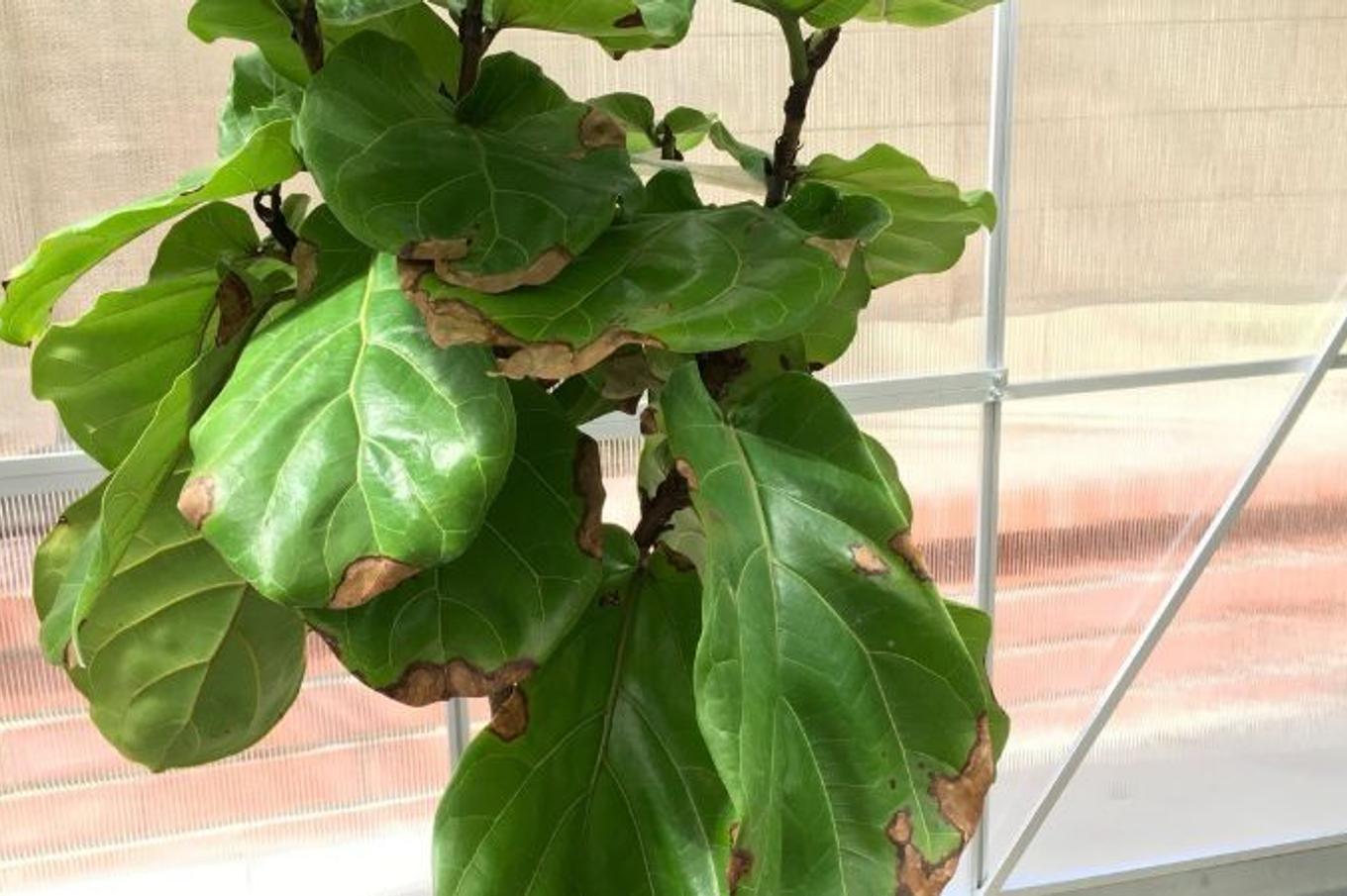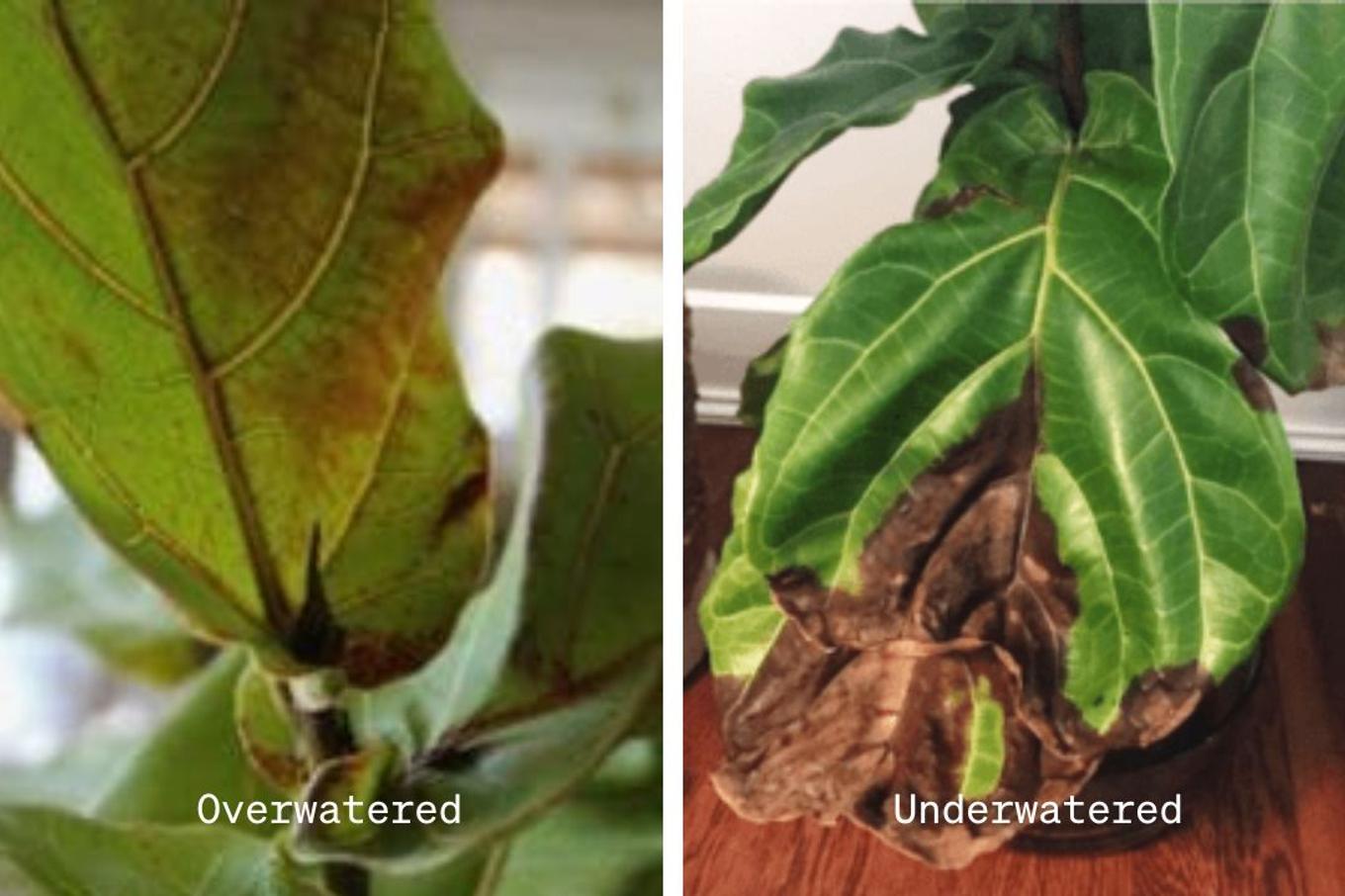Dry vs. Overwatered Fiddle Leaf Figs: How to Tell the Difference

Finding the right watering routine for your Fiddle Leaf Fig (ficus lyrata) is essential to keeping this striking houseplant healthy and thriving. Yet, one of the most common challenges Fiddle Leaf Fig owners face is figuring out whether they're overwatering or underwatering—two issues that can look surprisingly similar.
Because Fiddle Leaf Figs are sensitive to changes in their environment, it’s easy to misinterpret the signs. Leaf browning, yellowing, and drop are common symptoms, but they can result from several factors, including improper watering, poor lighting, low humidity, or inconsistent temperatures. That’s why it’s crucial to understand how your plant’s environment influences its water needs.
For instance, if your Fiddle Leaf Fig lives in a bright, warm space, it will naturally dry out faster, requiring more frequent watering. On the other hand, cooler, low-light areas slow the drying process and may require you to cut back. Matching your watering schedule to your plant’s light, temperature, and humidity levels is key to preventing issues before they start.
Still, even with a regular routine, it’s not always obvious what’s causing leaf damage. Overwatering often results in root rot—a fungal condition that attacks the roots and can lead to yellowing leaves, mushy stems, and eventual plant death. Underwatering, meanwhile, causes dry soil, curling or crispy leaf edges, and sudden leaf drop. Since both conditions can cause browning and shedding leaves, telling them apart can be tricky.
To help you diagnose your plant's symptoms more accurately, we’ve broken down the differences between an overwatered and underwatered Fiddle Leaf Fig.

Signs of an Underwatered Fiddle Leaf Fig
If your Fiddle Leaf Fig is suffering from too little water, it will often display the following symptoms:
- Curled or crispy leaf edges: One of the most common indicators of dehydration is leaves curling inward, particularly along the edges.
- Brown spots along the edges: Unlike overwatering, which causes browning near the center, underwatering usually causes dry, brown patches to appear at the tips or edges of leaves.
- Leaf drop throughout the plant: While overwatering typically affects the lower leaves first, underwatered Fiddle Leafs may shed leaves from the top, middle, and bottom with no specific pattern.
- Otherwise healthy-looking leaves: Despite browning or curling, the rest of the leaf may still appear vibrant and firm. This is a contrast to overwatered plants, which tend to look limp or sickly overall.
- Dry soil: A quick check of the soil is also helpful—if it feels bone dry several inches down, it’s a clear sign your plant is thirsty.
Signs of an Overwatered Fiddle Leaf Fig
Too much water can be just as harmful, often leading to a condition called root rot. Here’s what to look out for:
- Brown spots near the center of the leaf: These dark patches often appear along the veins or in the middle, rather than on the edges.
- Yellowing leaves: Multiple yellow leaves, especially if they appear all at once, are a strong sign of overwatering.
- General leaf browning and spotting: You may notice shaded or dark patches that spread quickly from one leaf to another.
- Leaf drop from the bottom up: Overwatered plants tend to shed their oldest leaves first as they prioritize new growth.
- Droopy, mushy stems or leaves: If your plant feels limp or its stems seem soft, it may be suffering from excess moisture at the root level.
Still unsure? Use a moisture meter to gauge the water levels in your plant’s root zone. It’s a simple and effective tool to prevent both over and underwatering.

What to Do When Your Plant Shows Signs of Both
It’s not uncommon for Fiddle Leaf Figs to exhibit signs of both overwatering and underwatering—especially if the plant has been on an inconsistent watering schedule. This is known as erratic watering, and it can confuse even seasoned plant owners.
Fiddle Leafs thrive with consistency. If your plant’s schedule is all over the place, its roots may not have time to fully dry out—or may stay dry for too long. To help your plant recover and prevent future issues:
- Set a recurring reminder to check soil moisture weekly.
- Adjust watering based on your home’s light, temperature, and humidity.
- Be consistent—even if that means watering every 10 days instead of every week.
Need More Help?
For more in-depth care instructions, check out our Complete Fiddle Leaf Fig Care Guide or connect with Léon & George digital Plant Doctors for personalized support.
Sources
This article was written in collaboration with Claire Akin of the Fiddle Leaf Fig Plant Resource. Visit their website for more in-depth tips on Fiddle Leaf Fig care.













